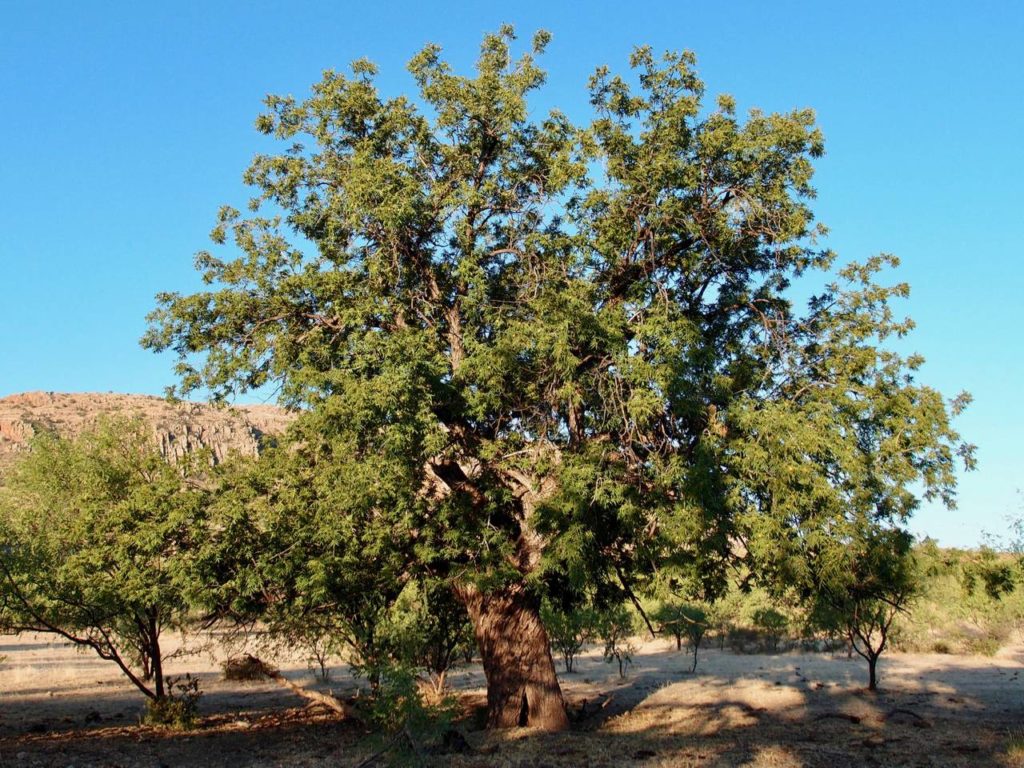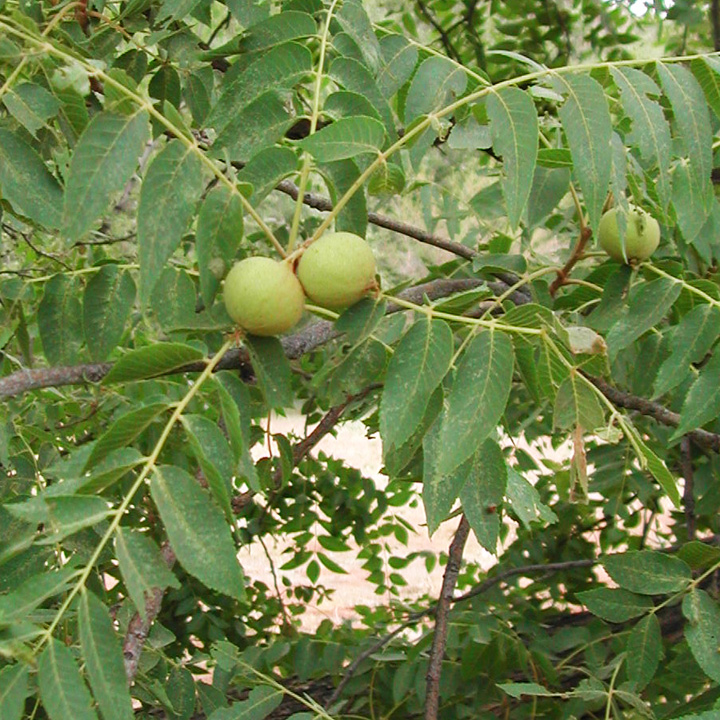When searching for water in the Sky Islands, finding a walnut tree can be a great indicator that you’re getting close to a spring, stream, or other water source! These towering woody plants are a key part of our mountain ecosystems, a vital source of food for wildlife, and the focus of this Friday’s Flora Feature.
Keep reading to learn where to find Arizona walnut trees and how to identify them.
Description:
The Arizona walnut (Juglans major), also known as black walnut or nogal silvestre, is a woody tree that grows throughout parts of the U.S.—Arizona, New Mexico, Oklahoma, Texas, and Utah—as well as throughout northwestern Mexico. Given its name, however, is it only native to Arizona, Texas and parts of Mexico.
Arizona walnut trees have light brown or gray bark with deep crevasses and can grow up to 48 feet tall (though we often see them growing at all sizes in the Sky Islands). They shed their leaves every year and are considered “round-crowned,” meaning the tree, when flushed with greenery, forms the shape of a circle.
The walnut boasts green leaf stalks that divide into smaller leaflets, known as a “pinnately compound.” Between nine and 15 leaflets can grow on a single stem. These finely serrated leaflets are narrow but grow up to 12 inches long, and they taper to a point.
In the spring, around April and May, the Arizona walnut flowers, producing long, green, slender catkins that, when pollinated, will form fruit: hard-shelled nuts that are protected by a leathery outer skin. Each nut with husk is about 2 to 3 cm in diameter—a little smaller than a golf ball.
Fun fact: The Arizona walnut tree produces edible walnuts that can be harvested for food. Once the skin has fallen off and the nut is ripe to eat, you can crack the shell open with a rock or hammer.
Many people note that they can smell a walnut tree (the leaves, stems, and nut husks) from a distance. The Arizona walnut gives off a very particular odor, one that is rich and earthy with a hint of citrus spice.
Habitat:
The Arizona walnut, as a spring plant, prefers to grow near places with dependable water sources. Walnuts often grow alongside willow, cottonwood, and sycamore trees, so if you’ve found one, look around—you may find other woody spring plants nearby.
The Arizona walnut can be found at elevations up to 7,000 feet. They prefer areas where there’s some sun and shade, like canyons or along established washes and stream banks.
Fun fact: There are at least 30 walnut springs in the Sky Island region.
Status:
The Arizona walnut can live to be over 150 years old. They are not currently declining or threatened. However, since walnut trees provide shelter and food for wildlife in this region, including the threatened Arizona gray squirrel, sustained drought can be a threat to both this species and those that rely on the walnut for survival.
Identification Tips:
Here are some traits to look for when identifying walnut trees:
- Light brown or gray bark with deep crevasses
- Long, narrow green leaflets with fine serrations
- Between 9 to 15 leaflets per stem.
- “Round-crowned” shape
- (In the summer) Hard-shelled nuts covered in a leathery skin
- Earthy, piney scent


